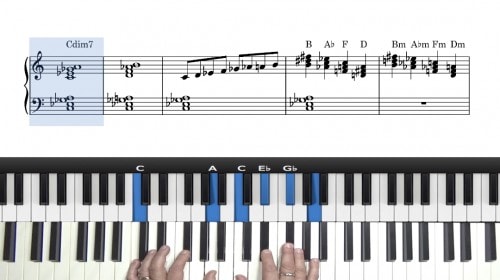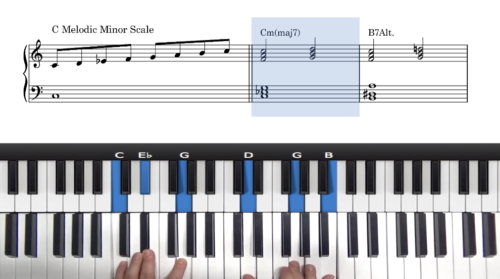Triad Pattern Improvisation
In this lesson we explore soloing and improvisation over the 12 bar blues using major and minor triad pairs. Triad pairs are usually derived from the scale associated with a particular chord type. We can also use triads from outside of the scale to add a specific chord colour or tension.
Triad pairs can be used to create melodic patterns and to solo and improvise over single chords, progressions, or even an entire chorus.
Step 1 – Learn Your Triads!
Before attempting triad pairs and patterns it’s important that you are comfortable and confident playing major and minor triads in all inversions. This is covered in our jazz piano foundations course and so revisit those lessons and practice exercises if this material has not yet been mastered.
Creating Patterns With Triads
For any chord type, we can take 2 triads and make patterns that can be used in soloing and improvisation. Here we have the C Dorian Mode and from the 7 notes in the scale we can derive the Eb and F triads:

The Eb and F triads are an effective combination to capture the essence of the C Dorian Mode.
The next step is to invert and arpeggiate the triads up and down the keyboard. The goal is to become comfortable with alternating the triads smoothly:

In this lesson we identify triad pairs for minor chords, major chords, dominant chords, and finally we apply to the 12 bar blues progression.
Practice Tips
-
Ensure that you are comfortable with major and minor triads in all possible inversions.
-
Alternate the triad pairs over 2 octaves and focus on smoothly connecting each triad.
-
Double the top and bottom note of the triad to create a 4 note pattern in the right hand and run this through each inversion.
- Incorporate these patterns into your improvised solos. They are also useful for melodic fills when we have space in the melody.






